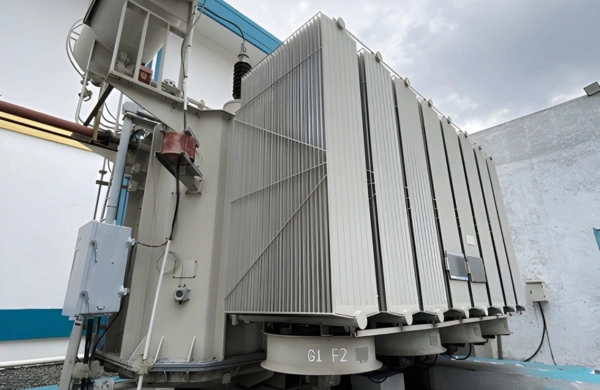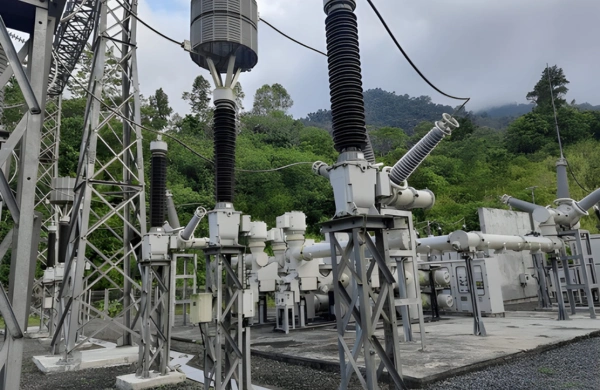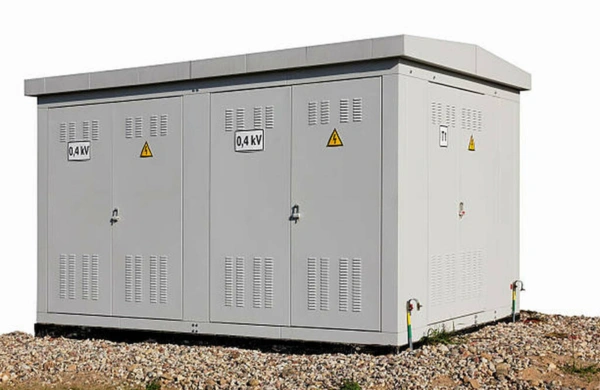Introduction
Modern manufacturing facilities, processing plants, and automation systems depend on stable low-voltage power to keep machines and control systems operating safely and efficiently. Low voltage transformers (LVTs)—typically rated up to 1,000V—convert high incoming supply voltages to safer, usable levels for instrumentation, relays, PLCs, and other control devices.
Whether powering motor drives, lighting systems, or sensitive electronics, these transformers ensure clean, consistent voltage with minimal losses. As industries in North America move toward digital automation, smart grids, and energy-efficient equipment, the performance and reliability of low voltage transformers have become more critical than ever.
This article explores the construction, performance standards, and manufacturing practices that make low voltage transformers integral to industrial power systems—and how Zetwerk is delivering precision-engineered solutions for OEMs and power system integrators across North America.
Know About Low Voltage Transformers Driving Reliable Industrial Power
1. Role and Importance of Low Voltage Transformers
Low voltage transformers serve as the backbone of secondary distribution networks and industrial control systems. Their primary function is to step down higher distribution voltages (such as 480V or 600V) to control or operating voltages (like 240V, 120V, or 24V).
Key functions include:
- Safe Voltage Conversion: Ensures end-user circuits and automation components operate within safe voltage limits.
- Power Conditioning: Stabilizes voltage under varying load conditions to prevent malfunction.
- Electrical Isolation: Protects downstream circuits from surges, harmonics, and ground faults.
- Efficiency Enhancement: Reduces transmission losses by matching supply and equipment voltage requirements.
Low voltage transformers are commonly found in machine control panels, building power systems, data centers, and distributed energy resources, where voltage reliability directly impacts uptime and productivity.
2. Construction and Material Design
The performance and longevity of a low voltage transformer depend heavily on its construction and the materials used. Manufacturers follow precision-engineered designs that balance cost, efficiency, and thermal management.
Core Material:
- CRGO (Cold Rolled Grain Oriented) Steel: Used widely for its magnetic efficiency and reduced hysteresis losses.
- Amorphous Alloy Cores: Offer superior energy savings due to lower core losses, ideal for continuous-duty applications.
Winding Material:
- Copper Windings: Provide excellent conductivity and thermal performance for industrial-grade transformers.
- Aluminum Windings: Used in cost-sensitive applications with careful thermal management.
Insulation Systems:
Insulation materials such as Nomex, Mylar, or epoxy resin are selected based on temperature class (Class B, F, or H) and operating environment.
Cooling Methods:
Most low voltage transformers are dry-type and rely on natural air cooling (AN), though forced air systems are used for higher ratings. Enclosures are designed for efficient airflow and compliance with NEMA or IP standards.
Mounting Configurations:
Transformers can be built for wall, panel, or floor mounting—important for OEMs designing compact control systems or machinery enclosures.
Zetwerk employs precision stamping, automated winding, and vacuum pressure impregnation (VPI) to ensure mechanical rigidity, low noise, and consistent insulation performance in every unit produced.
3. Electrical and Mechanical Performance Parameters
Low voltage transformers are evaluated on several performance criteria that determine their operational reliability and efficiency.
Voltage Regulation:
High-quality designs maintain regulation within ±3–5% between no-load and full-load conditions, ensuring consistent voltage to sensitive equipment.
Efficiency:
Energy-efficient transformers achieve 95–98% efficiency depending on load and design, meeting DOE and NEMA TP-1 standards.
Thermal Performance:
Optimized lamination stacks and efficient ventilation prevent overheating, keeping winding temperature rise below rated limits (usually 80°C–100°C).
Noise Level:
Magnetostriction and vibration are minimized through precise lamination clamping and resin impregnation, ensuring quiet operation—critical in data centers and commercial environments.
Mechanical Durability:
Robust terminal design, shock-resistant frames, and high-grade resin coatings protect the transformer against vibration and environmental stresses.
These parameters ensure transformers meet stringent industrial demands where reliability and uptime are non-negotiable.
4. Applications Across Industrial and Commercial Sectors
Low voltage transformers are used in a wide variety of electrical systems, providing power stability and safety in diverse applications.
Automation and Control Panels:
Supply voltage to relays, sensors, PLCs, and HMI devices, ensuring consistent performance and isolation from the main power line.
Lighting and HVAC Systems:
Used in buildings and factories to operate lighting circuits and heating, ventilation, and air conditioning equipment.
Machine Tools and Robotics:
Deliver precise control voltages to CNC machinery, robotic arms, and servo systems, maintaining accuracy and responsiveness.
Renewable Energy and EV Charging Systems:
Provide voltage transformation and isolation in solar inverters and electric vehicle charging stations.
Data Centers and IT Infrastructure:
Ensure clean and regulated low-voltage supply to racks, UPS systems, and communication networks.
The flexibility and reliability of low voltage transformers make them indispensable to every modern industrial facility, from assembly lines to smart buildings.
5. Standards and Testing for Quality Assurance
Manufacturers must meet strict standards to ensure low voltage transformers perform safely and efficiently. Common compliance frameworks include:
- UL 506 / UL 5085: U.S. standards for dry-type and control transformers.
- CSA C22.2 No. 66: Canadian certification for industrial transformers.
- IEC 61558: Global safety standard for power supply transformers.
- NEMA TP-1: Defines minimum efficiency levels for low voltage distribution transformers.
Typical Testing Procedures Include:
- Turns Ratio and Polarity Test – Ensures voltage ratios are correct.
- Dielectric Withstand Test – Verifies insulation integrity between windings.
- Load and No-Load Loss Measurement – Determines efficiency and performance.
- Temperature Rise Test – Confirms thermal endurance.
- Noise and Vibration Check – Ensures compliance with acceptable sound levels.
Zetwerk integrates automated testing systems to ensure consistent performance metrics, complete traceability, and batch-to-batch quality uniformity.
6. Leading Low Voltage Transformer Manufacturers
1. Zetwerk Manufacturing USA – Designs and manufactures custom-engineered low voltage transformers for automation, power distribution, and renewable energy sectors. Zetwerk’s vertically integrated production—from lamination fabrication to final assembly—ensures consistent quality, competitive lead times, and full UL/CSA compliance.
2. Hammond Power Solutions (Canada/USA) – Produces dry-type and encapsulated low voltage transformers optimized for industrial and commercial installations.
3. Jefferson Electric – Offers energy-efficient low voltage and control transformers for HVAC, lighting, and machinery applications.
4. ABB – Supplies robust, high-performance low voltage transformers designed for critical industrial and data center environments.
5. Schneider Electric – Provides compact, panel-mount low voltage transformers integrated into building automation and control systems.
7. Innovations in Low Voltage Transformer Design
As industries embrace digitalization and energy efficiency, transformer manufacturing is evolving to meet new performance and sustainability targets.
- Use of Amorphous Metal Cores: Reduces no-load losses by up to 70%, improving overall efficiency.
- Thermally Conductive Resins: Improve cooling performance and extend lifespan.
- Smart Transformers: Integration of sensors for real-time monitoring of temperature, load, and voltage.
- Eco-Friendly Materials: Transitioning to low-emission varnishes and recyclable core materials.
- Modular Construction: Enables easier maintenance and scalability for OEMs.
Zetwerk integrates these innovations through a single-source production model, giving North American OEMs access to cost-efficient, compliant, and customizable transformer solutions.
Conclusion
Low voltage transformers are the foundation of safe, stable, and efficient industrial power distribution. Their ability to provide precise voltage regulation, electrical isolation, and noise suppression ensures reliable operation across automation, data centers, and renewable energy systems.
For OEMs and system integrators in North America, Zetwerk provides complete transformer manufacturing—from magnetic core engineering to final product testing—under one quality-controlled framework. With advanced facilities, automated testing, and a proven record of on-time delivery, Zetwerk enables industries to achieve consistent performance, reduced downtime, and long-term energy efficiency.




FAQs
a. A transformer operating at or below 1,000 volts, typically used to step down power for control systems, lighting, and automation circuits.
a. They’re common in control panels, HVAC systems, machine tools, and renewable energy systems requiring safe, stable voltage.
a. High-efficiency units can achieve up to 98% efficiency, meeting DOE and NEMA standards.
a. Yes. Zetwerk offers custom voltage ratios, enclosure types, insulation classes, and mounting configurations for OEM applications.
a. Zetwerk’s vertically integrated production, strict quality testing, and UL/CSA certification ensure consistent performance and durability.








